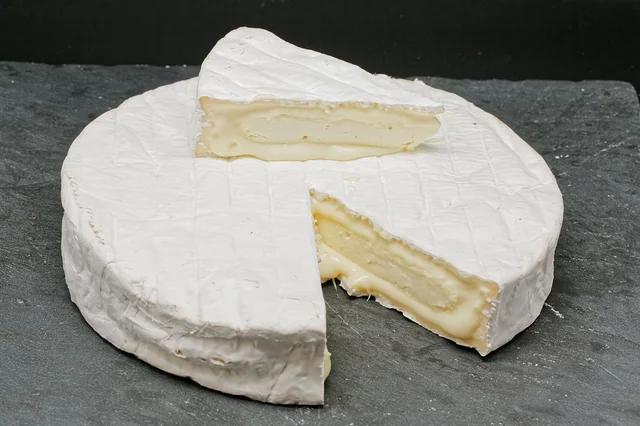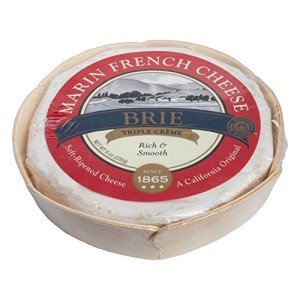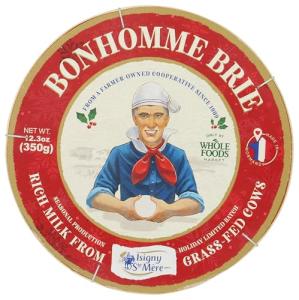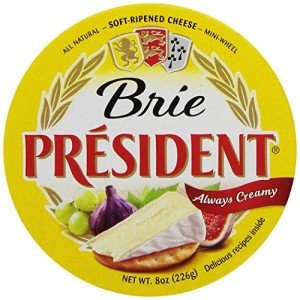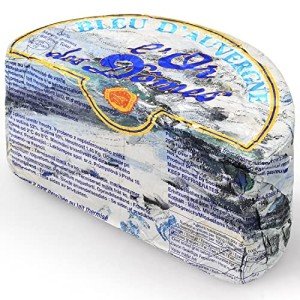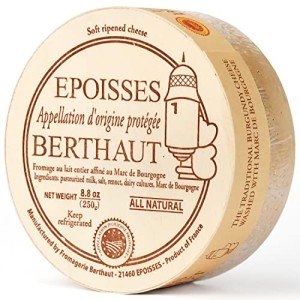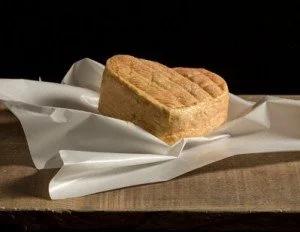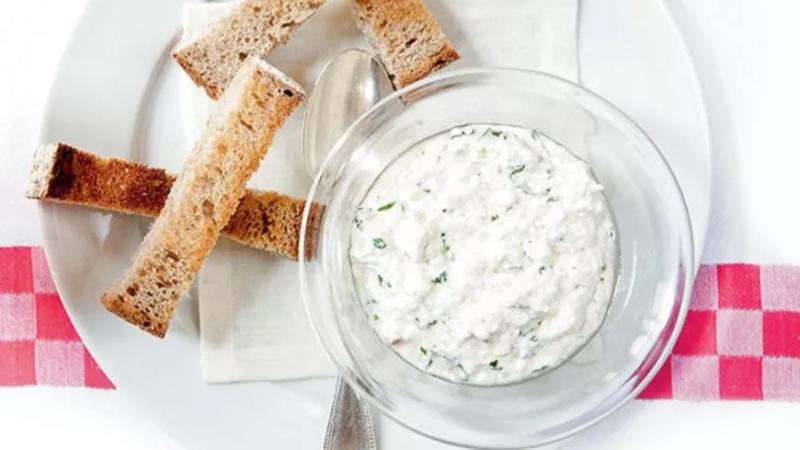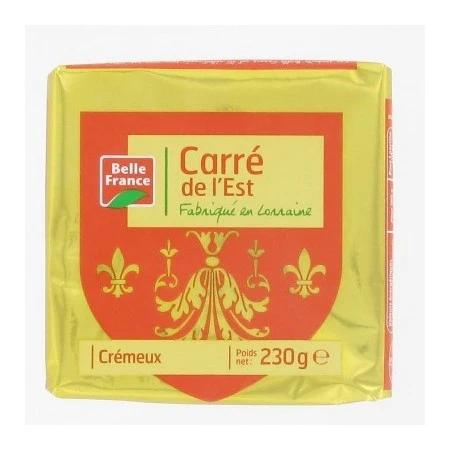Key Takeaways
- Brie de Nangis is a rare, milder Brie from France’s historic Brie region with a rich comeback story post-WWII.
- Distinctive for its delicate creaminess, subtle earthy notes, and artisan production methods preserving traditional flavors.
- It pairs beautifully with crisp whites, fruit preserves, and offers numerous culinary applications, from salads to baked appetizers.
- Nutritionally, it provides protein, calcium, probiotics, and beneficial fats, especially in traditional artisanal forms.
- Consumers should seek authentic sources to ensure freshness and safety, avoiding truffle-infused raw milk versions recently recalled.
Table of Contents
- The Rich History and Origins of Brie de Nangis
- The Art of Crafting Brie de Nangis
- Tasting Notes: What Makes Brie de Nangis Special?
- Nutritional Value and Health Benefits
- Finding Authentic Brie de Nangis
- Chefs and Experts Weigh In
- Do’s and Don’ts: How to Store and Enjoy
- Latest News and Events
- Bleu de Termignon: The Alpine Jewel
- Cheese Data: Fascinating Facts
- Conclusion
- Frequently Asked Questions
- Further Reading and Resources
Discover Brie de Nangis: A Rare and Flavorful French Cheese
Unlock the secrets of one of France’s most delicate yet historically rich cheeses. Brie de Nangis offers a soft, buttery experience that invites both novices and seasoned gourmands into the enchanting world of French fromage. Having nearly slipped into obscurity, this artisan cheese carries stories of resilience and tradition on every creamy bite. Whether paired with wine or savored solo, it captures the essence of terroir like no other. Ready to embark on a tasting journey that bridges past and present? Let’s dive deep!
The Rich History and Origins of Brie de Nangis
A Cheese Born from Royal Soil
Nestled just southwest of Paris, the charming town of Nangis lies at the heart of the historical Brie region. This lush landscape is notable for producing cheeses that strictly hail from Seine-et-Marne and Yonne to earn the prestigious “Brie” designation. Brie de Nangis carries not just the terroir but also an aura of nobility—legend has it the great Charlemagne himself relished Brie-style cheeses centuries ago at his lavish feasts. This royal connection elevates Brie de Nangis beyond mere food; it becomes a living relic of France’s regal past.
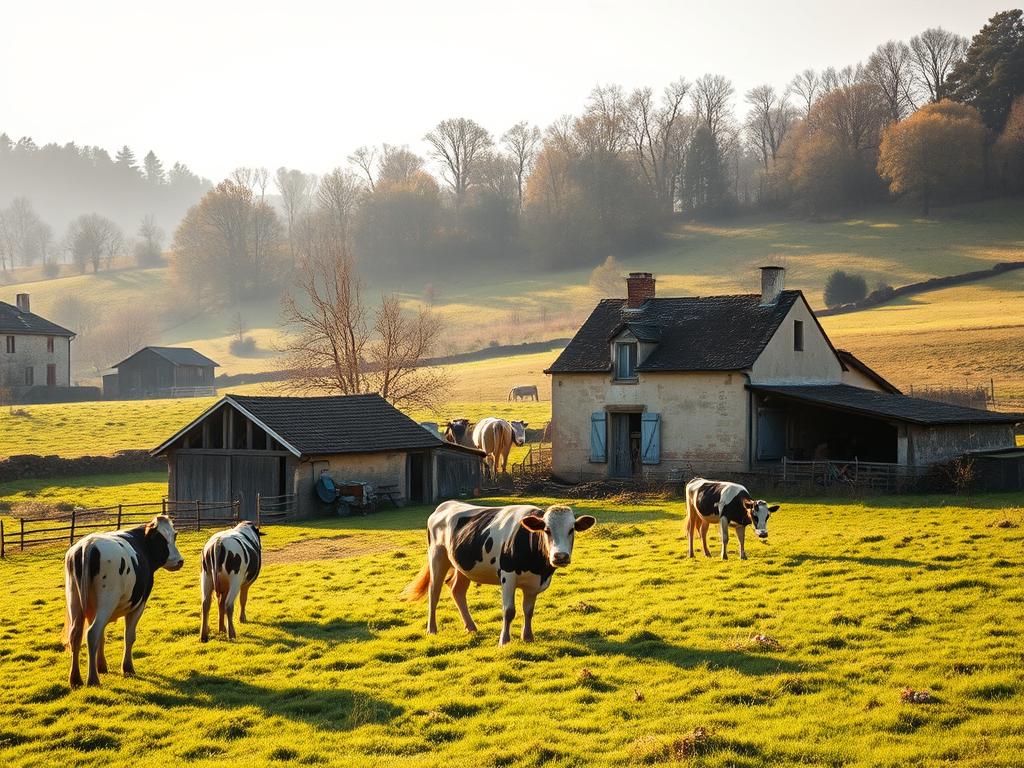 However, this softness and allure almost faded into oblivion. The mid-20th century industrial boom challenged traditional cheese farms, wiping out many small dairies across France. By 1950, a mere dozen farms kept the spirit of Brie de Nangis alive, teetering on the edge of disappearance. Thankfully, a passionate revival by dedicated artisans post-World War II rekindled the cheese’s legacy. Today, Nangis proudly claims its nickname as the "Brie Capital" of Île-de-France, harmonizing age-old tradition with modern appreciation.
However, this softness and allure almost faded into oblivion. The mid-20th century industrial boom challenged traditional cheese farms, wiping out many small dairies across France. By 1950, a mere dozen farms kept the spirit of Brie de Nangis alive, teetering on the edge of disappearance. Thankfully, a passionate revival by dedicated artisans post-World War II rekindled the cheese’s legacy. Today, Nangis proudly claims its nickname as the "Brie Capital" of Île-de-France, harmonizing age-old tradition with modern appreciation.
Comparisons with Other Bries
While Brie de Meaux and Brie de Melun dominate global Brie conversations with robust, mushroomy, or saltier profiles, Nangis plays a different tune. It behaves like a quiet muse, introducing gentler, sweeter sensations that ease newcomers into the world of French cheeses. Imagine a softer, milder Brie that melts faster on the palate but doesn’t compromise on complexity—this is Nangis’ charm.
From a historical standpoint, Nangis represents survival. Unlike its more famous kin who enjoyed more widespread distribution and recognition, it relied on small-scale, artisan production. This underdog story resonates with cheese lovers who value authenticity above all, making Brie de Nangis a delicious symbol of perseverance.
The Art of Crafting Brie de Nangis: Traditional Cheese Production
Where Terroir Meets Technique
Stepping into a Nangis creamery is like entering a cathedral of craftsmanship. Local cow’s milk, rich with pasture-born nutrients, undergoes a gentle process known as low-temperature pasteurization. This method carefully retains fragile aromatic compounds typically lost in conventional high-heat treatments. The result? A nuanced flavor profile that truly mirrors the mineral-rich soils and humid climate unique to the region.
The milk is poured into wide molds shaping classic 35cm diameter discs—larger and thinner than Camembert—each one a canvas awaiting its transformation. The cheesemaking artisans depend heavily on traditional practices, including daily hand-rotation of the wheels during their six-week aging period. This tactile intimacy ensures a consistent, even ripening that machinery simply cannot replicate.
Innovation Within Tradition
Though rooted in history, Brie de Nangis’ production saw a notable refinement in the 1970s when the esteemed Rouzaire Company introduced a regulated process dubbed "controlled Brie de Meaux." Their efforts not only elevated quality control but also protected the cheese’s delicate character, marrying tradition with modern food safety and consistency.
Today, every wheel ages in humid rooms that coax a soft, bloomy rind, enveloping a luscious interior that ripens from firm-centered youth to a luscious, fork-melting softness. These caves and cellars are almost as important as the milk itself because they provide the perfect microclimate supporting specific strains of mold and bacteria essential for Brie Nangis’ signature taste.
Tasting Notes: What Makes Brie de Nangis Special?
Texture and Aroma
Unwrapping Brie de Nangis reveals a delicate, cloud-like texture that invites both sight and touch. When young, the cheese is firm at its core with a slightly elastic bite, gradually softening into an indulgent, spoonable bliss as it ages. The edible rind adds a subtle tang reminiscent of gentle earthiness without overpowering the palate.
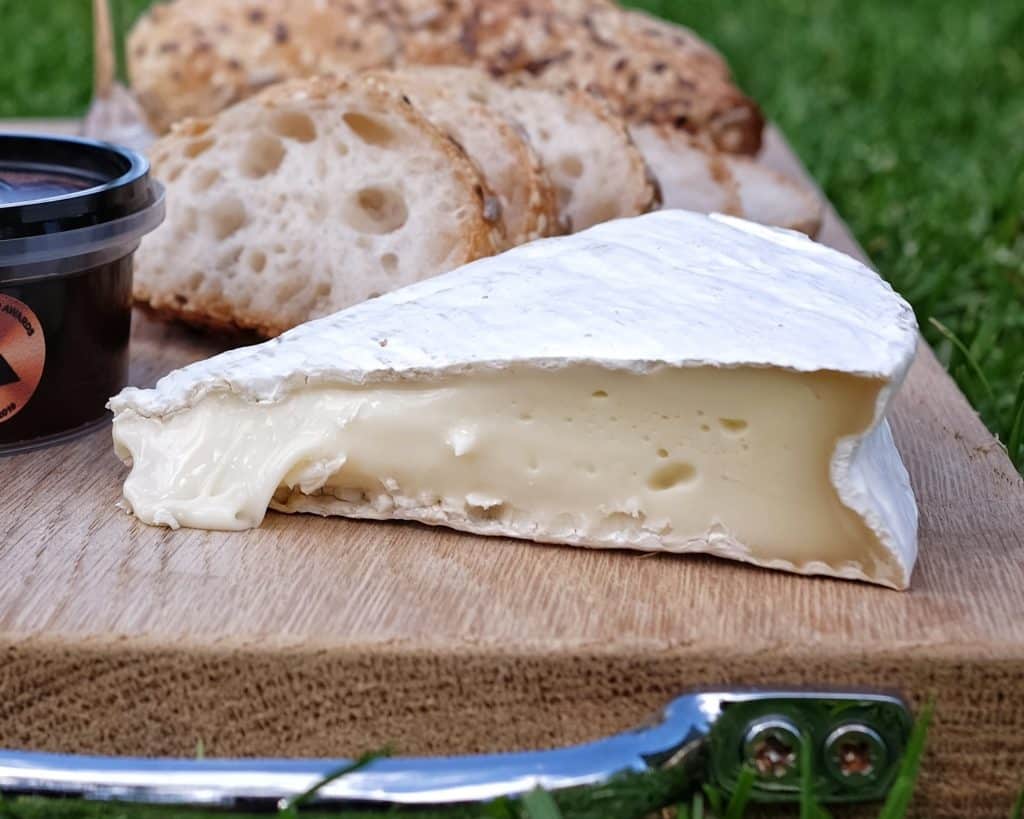 Its aroma hints at fresh butter, steamed cauliflower, and a whisper of forest mushrooms, enticing diners to explore each bite slowly. This mild scent belies the complex flavor journey ahead, which deepens impressively with age, developing hints of black truffle decadence that showcase its slow maturation.
Its aroma hints at fresh butter, steamed cauliflower, and a whisper of forest mushrooms, enticing diners to explore each bite slowly. This mild scent belies the complex flavor journey ahead, which deepens impressively with age, developing hints of black truffle decadence that showcase its slow maturation.
Serving and Pairing Suggestions
For the best sensory experience, serve Brie de Nangis at room temperature, allowing it to rest for over an hour before slicing. This unleashes its fullest flavor spectrum and achieves the perfect melt-in-your-mouth texture. Pair it with crisp, mineral-driven wines such as Sauvignon Blanc or the buttery note of Chardonnay.
Try these classic food accompaniments that elevate the tasting experience: crusty baguettes, tart cherry preserves, or honey-drizzled walnuts. For a Parisian flair, bake a whole wheel topped with caramelized pecans and fresh thyme—a tradition dating back to the 1920s that transforms this Brie into a showstopping appetizer perfect for entertaining. 🍯🥖
Marin French Triple Crème Brie - 8 Oz
Indulge in the rich and creamy goodness of this delectable brie that elevates any cheese board or snack platter
Product information
Product Review Score
4.45 out of 5 stars
50 reviewsProduct links
Nutritional Value and Health Benefits of Brie de Nangis
Nutrient Rich and Gut-Friendly
While Brie de Nangis delights your palate, it also offers nutritional benefits. A typical 30-gram serving provides about 6 grams of protein along with a significant 20% of your recommended daily calcium—essential for bone strength and dental health. Additionally, this cheese includes live bacterial cultures promoting a healthy gut microbiome, acting as natural probiotics.
The fat content, roughly 8 grams per serving, contains conjugated linoleic acid (CLA), known for its potential cardiovascular benefits. However, enjoy this richness mindfully, balancing it with fiber-rich foods such as apples or whole-grain crackers to support digestion and nutrient absorption.
Artisanal Quality Matters
Choosing artisanal varieties, such as those produced by the Rouzaire Company, means consumers get a cheese with higher nutrient and omega-3 fatty acid levels, thanks to cows' natural pasture diets. Studies confirm that traditional French dairy products often retain nutritional advantages over mass-produced cheeses, highlighting the value of heritage cheesemaking.
However, be cautious with specialty versions like truffle-infused raw milk Brie de Nangis, as recent safety recalls emphasize the importance of sourcing from trusted, verified suppliers to avoid potential foodborne risks. [Journal of Dairy Science] and [Singapore Food Agency] provide more detail on these findings.
Finding Authentic Brie de Nangis: Availability and Best Sources
Where to Buy Brie de Nangis
Brie de Nangis is a treasure to seek out. Start your search at reputable French fromageries or specialty importers, especially those committed to artisanal imports. In the United States, online retailers such as Artisanal Premium Cheese, Smelly Cheese Co., and Euro USA offer fresh portions or whole wheels shipped quickly.
These vendors provide detailed "fromager notes" outlining the cheese’s origin and milk type—key assurances of authenticity. Expect supple ivory paste without any ammonia scents, which signals freshness. Fast shipping within 1-2 days is crucial, as Brie’s delicate nature demands it.
Authenticity and Safety Tips
Beware of recent recalls associated with truffle-infused raw-milk Brie de Nangis versions, which do not apply to traditional pasteurized wheels. Always confirm your source and prefer cheeses that carry artisan or regional certifications. Checking vendor reviews and storing Brie properly after purchase further ensures a superior tasting experience.
When in doubt, connect with knowledgeable fromagers or cheesemongers who can guide you toward authentic, fresh Brie de Nangis. Their expertise helps you avoid inferior or unsafe copies and fosters appreciation for this heritage cheese.
Isigny Ste Mère Double Cream Brie Cheese, 350g
Indulge in the rich and creamy flavor that transforms any dish into a gourmet experience
Product information
Product Review Score
4.38 out of 5 stars
166 reviewsProduct links
Chefs and Experts Weigh In: Why Brie de Nangis Stands Out
Culinary Versatility and Elegance
Brie de Nangis has quietly captured the admiration of top chefs worldwide, praised for its delicate melt and subtle flavor layers. Parisian cheese expert Laurent Dubois describes it as having an "elegant melt" in baked dishes, a quality that transforms simple recipes into haute cuisine delights. New York’s famed chef Amanda Cohen incorporates it into gourmet grilled cheeses combined with fig jam, balancing sweetness and creaminess flawlessly.
At Michelin-starred Le Bernardin, this Brie quietly shines in cheese soufflés, enjoying a spotlight fueled by its nuanced profile and cultural story. Revered culinary figure Raymond Blanc refers to it as "the comeback kid of French fromage," celebrating not just its flavor but also its historical journey.
Expert Tips for Enjoyment
Want to embrace Brie de Nangis like a pro? Try baking a whole wheel adorned with almonds and fresh thyme—an artful appetizer that is surprisingly easy to prepare. Crumbled over peppery arugula and roasted beet salads, it adds creamy contrast and depth.
For breakfast, fold chunks into scrambled eggs with chives for a silky texture and subtle richness. Sommeliers recommend pairing Brie de Nangis with regional Île-de-France Chardonnay or crisp white wines, highlighting the harmony between wine and terroir. These simple ideas unlock the true potential of Brie de Nangis in everyday meals.
Do’s and Don’ts: How to Store and Enjoy Brie de Nangis Properly
Storage Secrets
Proper storage is key to preserving Brie de Nangis’ texture and flavor. Always refrigerate wrapped in wax paper—not plastic—to allow the cheese to breathe while retaining moisture. Maintain a cool temperature between 35-40°F to prevent spoilage without drying out the wheel.
Avoid freezing Brie, as this damages its delicate structure, turning creamy decadence into crumbly disappointment. If you notice any bitter odors, slimy rinds, or an overrunny paste (unless intentionally aged), it’s a clear sign the cheese has spoiled and should be discarded.
Serving Etiquette
When serving Brie de Nangis, cut wedges from tip to rind to guarantee an even distribution of creamy textures in each slice. Presentation matters—use wooden boards and accompany with fresh fruits for an appealing display. Historically, serving Brie warm was a mark of refined culture in 19th-century France; chill it too much, and you risk dulling the flavor.
Taking these steps creates a welcoming experience for guests and honors the cheese’s rich heritage, marrying taste and tradition seamlessly.
President Brie Cheese, 8 oz Round
Indulge in the creamy, rich flavor of this classic French cheese that pairs perfectly with your favorite crackers and fruit
Product information
€4.01
Product Review Score
4.26 out of 5 stars
21 reviewsProduct links
Latest News and Events: French Cheese Updates
January 2025 Safety Alert
In early 2025, Singapore’s Food Agency issued a recall for "Nangis Lait Cru Truffe Noire 3%" due to potential Listeria monocytogenes contamination. This event underscored the importance of sourcing cheeses from verified suppliers and reiterated France’s rigorous food safety standards. Traditional pasteurized Brie de Nangis remains unaffected and safe for consumption.
The Telegraph’s 2025 Brie Showdown
The Telegraph spotlighted artisanal Brie de Nangis in a 2025 tasting showdown, where it outperformed supermarket alternatives in both texture and flavor complexity. This recognition reaffirms the value of traditional production methods and growing consumer demand for authentic regional cheeses.
Specialty Cheese Market Growth
Demand for protected French cheeses is surging, with U.S. imports rising 18% in 2024 alone. Regulatory enhancements by the FDA now better differentiate Brie varieties, helping importers and consumers access authentic, high-quality cheeses such as Brie de Nangis more easily. This growing interest bodes well for artisanal cheesemakers and cheese lovers alike. [FDA Import Alerts]
Bleu de Termignon: The Alpine Jewel of French Cheeses
A Unique Alpine Experience
While Brie de Nangis captures hearts with subtlety, let’s explore the bold charm of Bleu de Termignon, an alpine marvel from the Savoie region. This cheese stands apart with its naturally formed blue-green marbling developed through a process called “bleu spontané”. Unlike needle-pierced blues, its veining is unpredictable and organic, making every wheel uniquely captivating.
Made from raw milk of Tarine and Abondance cows grazing wild mountain pastures, Bleu de Termignon blends creamy and crumbly textures with rich nutty flavors and delicate notes of mountain herbs. Legend attributes its invention in the 17th century to a shepherd who accidentally left cheese in a damp cave, embracing the serendipity of nature’s hand.
Enjoying Bleu de Termignon
This artisanal cheese pairs brilliantly with traditional accompaniments like walnut bread and dark honey, enhancing its complex flavors. It also complements roasted beet salads when crumbled and can be incorporated into luscious fondue blends alongside Gruyère for a heartwarming alpine treat.
Plan a visit to Termignon during September's famed "Transhumance" festival when cows parade adorned with floral crowns—an unforgettable glimpse into regional culture and cheesemaking. Fun fact: Napoleon’s soldiers relied on Bleu de Termignon as an energizing ration during campaigns, a testament to its sustaining and robust nature.
Bleu D'Auvergne French Blue Cheese - 1 lb
Rich and creamy with a bold flavor that's perfect for cheese boards or cooking
Product information
€59.58
Product Review Score
4.66 out of 5 stars
53 reviewsProduct links
Cheese Data: Fascinating Facts
Comparison: Bleu de Termignon vs. Brie de Nangis
| Feature | Bleu de Termignon | Brie de Nangis |
|---|---|---|
| Production Method | Natural "bleu spontané" | Low-temperature pasteurization |
| Annual Production | < 3 tons | ~120 tons |
| Aging Period | 3-6 months in caves | 4-8 weeks |
| Milk Source | Tarine/Abondance cows | Primarily Holstein |
Industry Insights and Nutritional Profiles
| Statistic | Value | Significance |
|---|---|---|
| Cheese Varieties in France | 1,200+ | Highest globally |
| Annual Exports | €4.2 billion | #1 cheese exporter globally |
| AOC Protected Cheeses | 56 | Ensures terroir defense |
| Per Capita Consumption | 27.2 kg/year | 2nd worldwide after Denmark |
| Nutrient (per 100g) | Bleu de Termignon | Brie de Nangis |
|---|---|---|
| Calories | 355 kcal | 334 kcal |
| Protein | 21g | 17g |
| Calcium | 528 mg (53% DV) | 184 mg (18% DV) |
| Fat | 29g | 28g |
Conclusion: Celebrating French Cheese Heritage
Brie de Nangis exemplifies a remarkable story of survival and tradition within France’s rich cheesemaking heritage. From its near extinction in the 20th century to its contemporary revival, this cheese embodies resilience, dedication, and passion. Its soft, buttery profile serves as an inviting gateway for those exploring French dairy arts, contrasting beautifully with its more robust Brie cousins.
The artisanal attention from pasture to the aging cellar keeps the spirit of centuries-old savoir-faire alive, impressing chefs and gourmands alike. Brie de Nangis is more than just flavor; it is history, craft, and terroir presented in edible form that offers both nostalgia and novel delight.
Beyond Brie de Nangis, France’s cheese landscape is vast and diverse, boasting alpine gems like Bleu de Termignon that embody regional uniqueness and cultural legacy. To experience these legends firsthand and support authentic producers, explore our curated French Cheese collection. Your next favorite cheese adventure starts here—velvety, bold, and always authentic.
French Epoisses AOC Cheese - 8.8 oz
Rich and creamy with a bold flavor that’s perfect for your cheese board
Product information
€52.76
Product Review Score
4.42 out of 5 stars
230 reviewsProduct links
Frequently Asked Questions About French Cheeses
- What makes French cheeses different from others?
French cheeses celebrate terroir—a concept expressing how the local soil, climate, and traditional methods shape unique flavors. Many follow centuries-old recipes protected by strict AOC laws, ensuring authenticity and quality. This devotion to place and process results in diversity unmatched worldwide. [Cheese Science Toolkit]
- How many French cheese varieties exist?
France proudly produces over 1,200 distinct cheese varieties, making it the most diverse cheese-producing country globally. Among these, approximately 56 have the prestigious AOC designation, aligning with traditional territories and methods. Examples include Brie de Meaux and Roquefort. [CNIEL]
- Is raw-milk cheese safe?
When properly aged, many raw-milk cheeses develop natural defenses such as acidity and beneficial bacteria that enhance food safety. Hard cheeses like Comté mature over extended periods, reducing pathogens. However, vulnerable groups like pregnant women or immunocompromised individuals should consult health professionals before consuming them. [FDA]
- Why does Brie de Nangis cost more than supermarket Brie?
Artisanal Brie de Nangis involves hands-on, small-batch production using high-quality milk and lengthy aging processes, resulting in richer flavor and superior texture. This craftsmanship naturally commands a price up to three times higher than mass-produced supermarket Bries, which often sacrifice complexity for volume. [The Telegraph]
- Can I freeze French cheese?
Freezing is generally discouraged for soft cheeses like Brie, as it deteriorates their creamy texture and delicate flavors. Hard cheeses such as Comté may be frozen if grated, ideal for cooking purposes. Always thaw cheeses slowly in the refrigerator to maintain quality. [French Dairy Board]
- What’s the white mold on Brie?
The white rind on Brie is formed by Penicillium candidum, a safe and edible mold essential for developing Brie’s fluffy appearance and signature flavors. It protects the paste, encourages even ripening, and adds subtle earthy notes. The rind is completely safe and often enhances the tasting experience.
- Which French cheeses are vegetarian-friendly?
Many French cheeses, including Brie de Nangis, Camembert, and Comté, offer vegetarian options made with microbial or vegetable rennet instead of animal-derived enzymes. Always check labels or consult fromagers to confirm vegetarian suitability, especially for artisanal cheeses.
- How should I serve cheese for guests?
A balanced cheese board includes 3-5 varieties covering soft, hard, and blue cheeses. Always serve cheeses at room temperature to maximize flavor. Pair with complementary fruits, nuts, and crusty baguettes, and add small labels with interesting facts for a personal touch. [French Cheese Board]
- Why do some cheeses have AOC labels?
The Appellation d’Origine Contrôlée (AOC) certification legally protects the origin and traditional production of French cheeses. It guarantees that products like Brie de Meaux are made in specified regions using sanctioned methods, preserving heritage and quality. [INAO]
Further Reading and Resources
- Cheese Science Toolkit - An excellent resource exploring the science behind cheese terroir, explaining how environment shapes cheese characteristics.
- CNIEL - French Dairy Industry - Offers comprehensive data on French cheeses, their production, export, and cultural significance.
- FDA Raw Milk Safety - Provides useful guidance regarding the consumption and safety of raw milk cheeses.
- The Telegraph Brie Showdown - A popular tasting comparison highlighting differences between artisanal and supermarket Bries.
- French Cheese Board - A delightful guide on building cheese boards and serving tips to impress guests.
